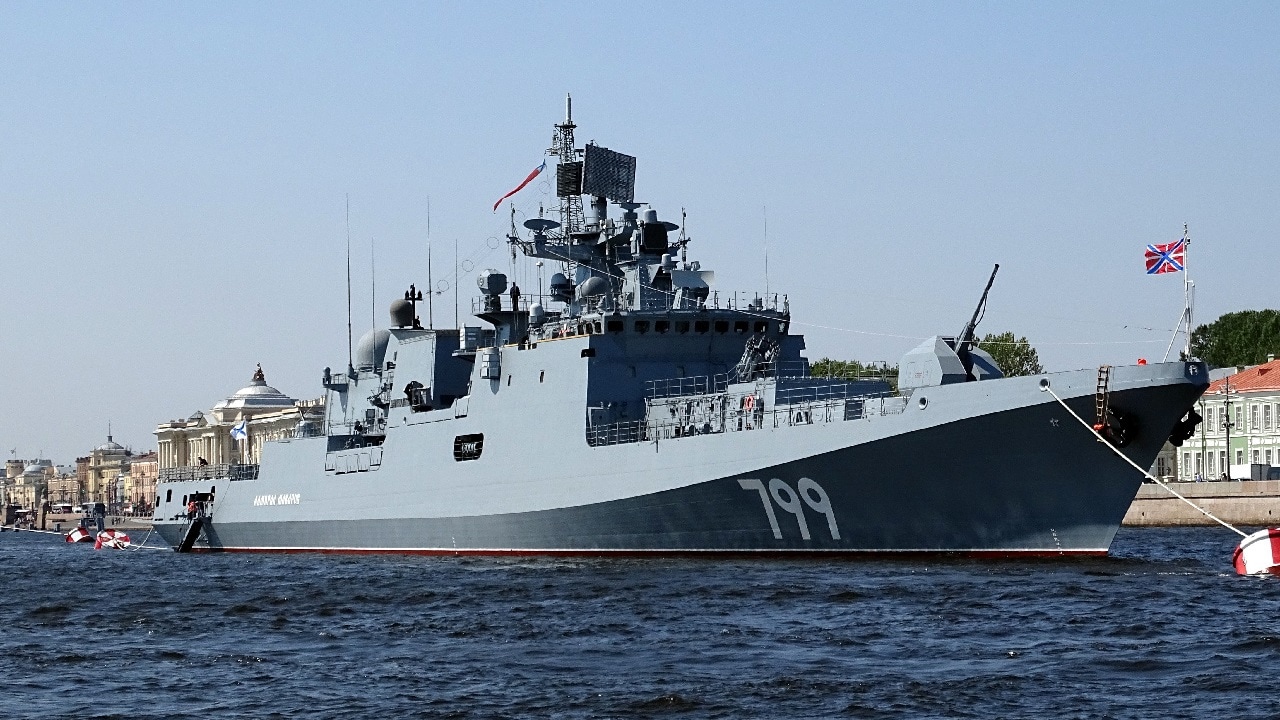Russia’s Admiral Grigorovich Class frigates, which are some of the newest in the Russian Navy today, have taken an active role in the Black Sea Fleet’s support for Moscow’s 2022 invasion of Ukraine.
History of the Admiral Grigorovich Class
Constructed in the Yantar Shipyard in Kaliningrad and designed by the Severnoe Design Bureau in Saint Petersburg, the Admiral Grigorovich, which is the first example of the Admiral Grigorovich Class to be built, was laid down in 2010 and launched in 2014. The Admiral Essen and Admiral Makarov, the second and third examples of the class, were laid down in 2011 and 2012 and launched in 2014 and 2015 respectively. Russia initially had ordered six examples of the Admiral Grigorovich Class, but following Russia’s 2014 seizure of Crimea and invasion of eastern Ukraine, Kyiv’s state-owned gas turbine company Zorya-Mashproekt refused to supply critical elements of the ship’s propulsion system to Russia for the warships. Instead, Russia opted to sell off the three uncompleted vessels to India, who would directly purchase the necessary engines directly from Ukraine to be installed on the vessels.
What is the Admiral Grigorovich Class?
As a class, the Admiral Grigorovich frigates are designed to be capable of anti-submarine, anti-ship, and anti-aircraft warfare, and are equipped accordingly. According to the United Shipbuilding Corporation, which controls the Yantar Shipyard and Severnoe Design Bureau, the ships of the Admiral Grigorovich class are equipped with 3M-54 Kalibr missiles, a single 100mm А-190E main gun, torpedo tubes, and a RBU-6000 anti-submarine missile launcher. The class includes a helipad to carry a single Ka-28 or Ka-31 helicopter, and for air defenses the Admiral Grigorovich class is equipped with a Shtil-1 missile system, two Kashtan close-in weapon systems, and eight Igla man-portable air-defense systems. The ships reportedly have a displacement of a little over 4,000 tons and a crew of 180. Powered by a combined gas and gas propulsion system, the ships of the Admiral Grigorovich class can travel at speeds of 30 knots when cruising.
Service History of the Admiral Grigorovich
Following their introduction to the Russian fleet, Russia’s three Admiral Grigorovich-class frigates saw their first deployment as part of Russia’s intervention in the Syrian Civil War in support of Syrian dictator Bashar al-Assad. As part of the intervention, the Admiral Grigorovich and the Admiral Essen both fired Kalibr cruise missiles at targets in Syria. The Admiral Makarov also joined the fleet operating in the eastern Mediterranean, where it was intended to remain on “standby” along with a larger flotilla.
However, participation in Russia’s 2022 invasion of Ukraine has been the highest-intensity combat ships of the class have been involved in. Ships of the class appear to be taking part in a wider sea-based bombardment of targets within Ukraine with Kalibr cruise missiles that has become one of the most internationally infamous elements of Russia’s invasion. Following the Ukrainian sinking of the previous flagship of Russia’s Black Sea Fleet, the Moskva, the Admiral Makarov was possibly named as the new flagship. Rumors swirled in May that the Admiral Makarov had itself been struck by Ukrainian missiles and heavily damaged or even sunk. However, these claims turned out to be false, and no further information has emerged with suggests that the ship has been taken out of action.
While the ships of the Admiral Grigorovich Class may all be confined to the Black Sea Fleet and far less numerous than the Admiral Gorshkov Class, the Admiral Grigorovich, Admiral Essen, and Admiral Makarov likely have plenty of service ahead of them, given their young age.
Wesley Culp is a Research Fellow at the Center for the Study of the Presidency and Congress. He regularly writes on Russian and Eurasian leadership and national security topics and has been published in The Hill as well as in the Diplomatic Courier. He can be found on Twitter @WesleyJCulp.

